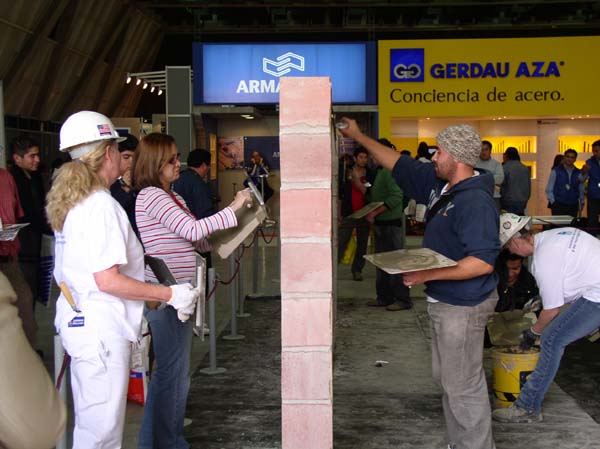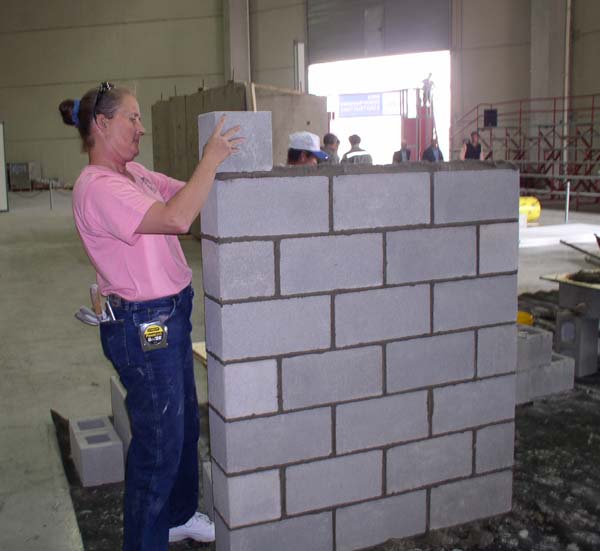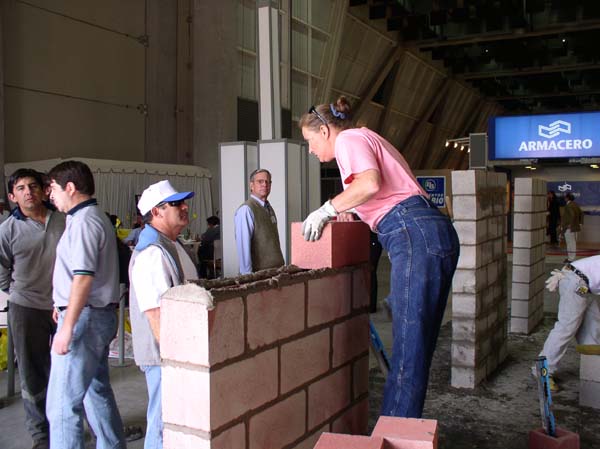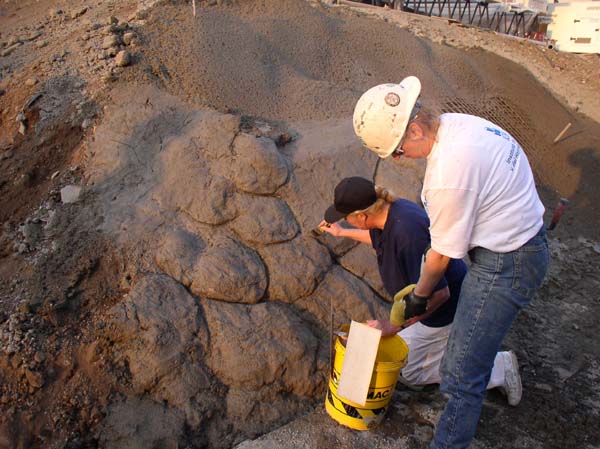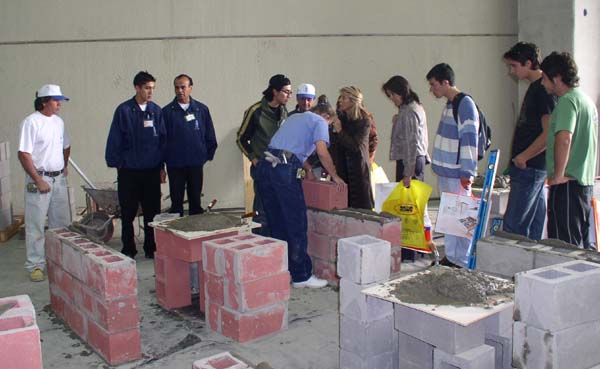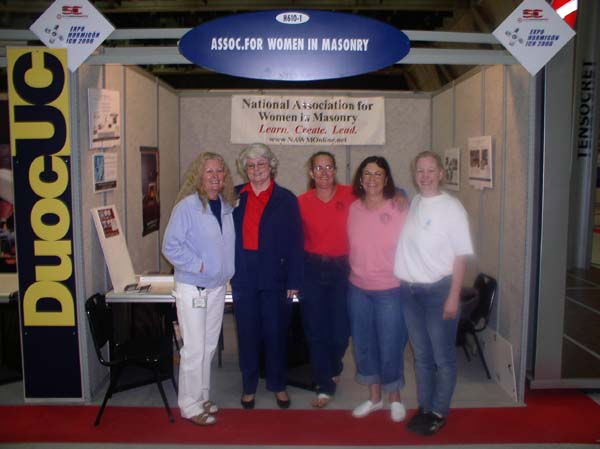NAWM goes to Chile
|
Report from Chile by Jeannie Rosanelli April 29, 2006 April 30, 2006 May 1, 2006 May 13, 2006 |
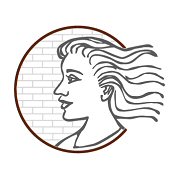
|
|
For Immediate Release Seattle WA ... Five members of the National Association for Women in Masonry (NAWM) are going to Santiago Chile Trade Expo to teach masonry installations, worker safety, and exterior finish techniques to 300,000 Chilean attendees During the May 3-6, 2006, technology trade Expo in Santiago Chile, five female trade experts from the fields of masonry and exterior finishes will be featured at the Expo Hormigon (http://www.expohormigon.cl). Lead by NAWM Executive Director, Barbara Headrick, the group includes Mary Lovette, BAC Local #1 bricklayer, Seattle WA; Laura Johnson and Suzie Lloyd, International Plasterer's and Cement Masons' Union of Portland OR; and Jeannie Rosanelli, Buckley Rumford Fireplaces, Port Townsend WA. The group will be presenting the following seminars and demonstrations:
2. Dryvit, Stucco, and EIFS exterior finishes and Venetian Marble interior finishes, Laura Johnson and Suzy Lloyd 3. Laying of CMU block and bricks, Mary Lovette 4. The History and Constructability of Rumford Fireplaces, Jeannie Rosanelli
NAWM members were invited to attend and participate in this event after their attendance at the World of Masonry, sponsored by Hanley-Wood Publishing, in January of 2006. Information about NAWM membership can be found at www.nawmonline.net. For more information, contact Barbara Headrick at barb@headrickassociates.com End
|
|
April 29, 2006 Hola! What an adventure the Chile trip has been and more to come. We traveled from Seattle to Dallas, Texas via an American Airlines 747 then transferred to an American Airlines 767. This plane had the three isles of seats across and an overhead TV every 4 seats. I particularly liked the satellite picture that would come on every so often to show us where we were. One can look on a map and see where the countries are, but to watch this picture and see that we had just crossed over the Panama Canal, or just flew by Bolivia heading for Peru next was very exciting. We landed at 7:21 am. After getting through customs in Santiago, a van was there to meet us and take us to Hotel Coronal where we checked into our rooms, showered and literally crashed for about an hour. Needless to say sitting up in the plane all night did not produce much sleep. But my hour was enough and waking quite refreshed I was ready to begin the day though no one else was up as yet. I walked down to the lobby thinking I would stroll around and take some pictures. I was met, in the lobby by Juan Pablo who created Expo Hormigan in 2000 and continues to draw it together each year. This is El Hefe. He created this organization completely non-profit and works all year to gain investors to put the Expo on the next year. We talked for a while until the rest of the group came down and then went to lunch. The food, in a word, "Delicioso"! The food is very mild. Even though you can buy chilies in the markets, their cooking very rarely has any type of hot pepper in it. They have a lot of fish many I have not heard of, so I tried one of the local fish and it was great. They also cook beef, pork and chicken with a lot of vegetables and everything is served with a salad in the center of the table. They are big on appetizers and if you have a glass of wine, very shortly a plate of cheese and olives show up on the table. After lunch we went to the Concrete Institute office met with more officials and discussed the Expo. The whole idea behind the Expo not only is to bring technology to the country to create quality products that doesn't fall down within a few years but also to create better paying jobs for the people. To coin an American phrase, "Give them a hand up, not a hand out". If a person is willing to work, the government will find work for them. An example of poor quality is the mortar they use. They have to constantly rebuild and repair. They don't know what a trowel is and I asked, "Then how do they put the mortor on and was told, With a shovel"! So then I just had to ask, "But how do they treat the joints then"? Answer = "They don't." which is, besides poor materials, why things fall down. I can't wait until the demonstrations begin. They are convinced that there is no way to shoot concrete and that it will not stay where it is shot too. And when Laura begins to finish it, she will be awesome. She is such a craftsman. The work she did today to begin preparing had the workers standing around commenting. They laughed at us yesterday when the word went out what we were there for. Today they really watched and listened. We spent seven hours at the Expo site then headed back to the hotel to eat the fashionable 9:00 dinner. I tried the local fish at lunch and would like to have more of that but dinner offered as one of the choices salmon and I was curious as to how they would prepare it. Well, once again, "Delicioso". During dinner and until about 11:00 we discussed the Expo and what a difference the previous ones have achieved but our gracious host stated that never have they had people come to teach with such knowledge and experience. That, as you can imagine, blew us away. They are so excited about teaching the people to do this all for themselves. They need and want to have their workers certified. This whole Expo is geared to teach the trainers, which at this point they have none, to teach the workers. I didn't know until that meeting that we and the two shot-crete guys are the entire Expo. Juan told us there is a ban on wood burning. Perfect. I cannot wait to explain how clean burning the Rumford is. I know, I know, I will try not to over sell. We are meeting again at 7:00, to see, comment and write some verbiage on the videos of the setup that was done today. Then to dinner and more talk. They are very passionate about all this. I have an idea bed will be a very welcome site tonight as they think nothing of planning through the night. In fact, the Cement institute office is open 24 hours and we were told if we had need of anything to contact them as someone would be there. They have all been extremely gracious hosts. It surprised me that so very few speak English even in the hotel and those that do only know a few words but they are very happy if you share the words and pronunciations and just as happy to share their words with you. Monday, is the 1st of May and that is a holiday and we have been told there will be no work. It is the equivalent of our Labor Day and unlike our holiday, there will be no stores of any kind open. We will be taken to the beach where there are vineyards and wine tasting. The Expo will start on Tuesday. So Sunday, tomorrow, Barb and I will be setting up our booth and doing a dry run through our presentations. We asked if Madame Presidente would be at the Expo and was informed that the President had been told we were coming but they would not say if she would be there. I would imagine for security reasons they would not announce a visit ahead of time. It would be quite an honor to meet her. Must close this off tonight as it is 11:30 and we are being picked up at 9:00 in the morning. Haven't had time to down load the few pictures I've taken. But will get that done as soon as the opportunity arises.
Hasta Luego,
Today we visited the coast which is a 2 hour drive from Santiago. There were specific places they wanted to show us and unfortunately we could not stop if there was something to photograph in between. My camera seems to have a pretty fast F stop and I got pictures while moving that I didn't think I would catch. To get to the coast one must get over the mountains however, here they do not travel over but through. The first tunnel was about 10 miles long and the second was 8 miles. Between Santiago and the coast were two tolling booths and I am told in every direction one could travel are the toll roads which is how they pay for the highways. Spain was one of the first countries to have ruled over Chile, hence the Spanish Castilian language. However, the culture is not Spanish. Germany and the British came next and the culture is a combination of German/British. Our first stop was a quaint restaurant where our host Juan Pablo wanted us to try the Empanadas. I like Empanadas but this was different from the Empanadas they have in Mexico. They are a meat pie filled with beef and onions. Very tasty and are made with a pie dough that is cooked in an outdoor bake oven. They do not have tortillas or know what a tortilla is. On to Vina Del Mar. Vina is the name of the town so we have Vina of the sea. This is very pricey real estate both here and in Valparaiso where Madame Presidente has her home. The first stop in Vina Del Mar was a veteran's war memorial, at the Armada (Navy facility) which was also a memorial to Aurturo Prat. He was a naval officer who in his wooden war ship refused to surrender to the invading forces which was Japan. The invading forces requested his surrender many times and Aurturo consistently responded, "Chileans do not surrender." The invading force finally rammed into the side of Arturo's wooden ship with their metal ship and sank him, and Arturo's last shot was from under the sea into the metal ship still not surrendering. There is a memorial in Japan honoring their most important war heroes. Two are Japanese and the third is Arturo Prat. Vina del Mar is a seaport where the container ships offload their cargo. The beaches are very brown sand. The houses appear to be stacked one on top of another going up the mountain sides and is home to 1 million full time residents and about a quarter million part-time residents. Valparaiso is further up the coast but the two cities run into each other. This city also is home to about 1 million people and here we have the Army base. The highway runs right through the base with a good sized fence on either side of the highway. It is a patrolled with military men sporting some mean looking rifles walking post. In Valparaiso, we were driven to the front entrance of some shops but when we left we took a Funicular down to the parking area where our driver met us. This is a wooden car that goes down the side of the hill like a trolley car. It was built in 1856. They also have a working elevator called Concepcion Elevator that is the oldest in Valparaiso built in 1883. Lunch was in a restaurant over looking the sea. I had Oyster Pil Pil which is not Oysters but scallops. There is a portion of meat that surrounds the scallop that is bright orange. This area is trimmed off of the scallops that we get in the states. I can't imagine why as it is very good and quite tender. Next stop was at a museum of music. A Moai stature showed up in Valpraiso from Easter Island. No one knows how it was moved from Easter Island to Chile. Weighing several tons they certainly could not have moved it by canoe.
Today is their Labor Day and a Holiday. Our host Juan Pablo besides being the president of the Concrete Institute is also a consulting civil engineer by trade, and received his degree from Oxford in England. He had to see to some duties this morning so the crew spent the morning straightening our rooms and reading the paper which they supplied us with an English version. We met Juan at 1:00 and walked about 7 blocks to the subway. We took the subway to the town square which is the heart of Santiago. After departing the subway, walked another 9 blocks to a fish market that was also a restaurant. It is something like our fish market in Seattle but many times larger. Here we had lunch and enjoyed some native dancers in costume. Santiago is a city of 6 million people and every one has a car. They have small compact cars not because of gas prices which they pay $5.00 a gallon for, but because their streets are very narrow. They have no catalytic converters on the cars so not only is the air dangerous to breath but the smog is many times worse then Los Angeles. One of the campaign promises of the new regime was to clean up the air and since the government now seems to be dragging their feet the Chilean people are quite upset about it. Their papers have ads that are requesting the worlds help by donating a portion of your computer space so that one giant brain can be put together that scientists can use to reach a solution. The first news we saw on the TV in the plane while traveling here, was of the students, 5,000 of them, rioting in Santiago around the university. Today the open air markets along the route we traveled that would have been open for the holiday were closed because another riot was threatened. They are protesting the new government's proposal of putting students to work to help pay for their schooling among other things. So we walked in front of the university going but came back by another route. We heard and saw a group of young people chanting and thought they were some of the students but Juan told us it was a group of communist youths. Chile is enjoying a very good economy that can't seem to do anything but go up. Their only export is cooper and they continue to get top dollar and to double exports. Tomorrow we will be at the Expo to finish setting up and put on one show each. We will leave at 8:00 am and return about 6:30 pm. Our first full show will be on Wednesday.
Santiago, Chile. Last Days With the end of the Expo, ceremonies were held to honor all that had worked in Expo Hormigon 2006. Normally a large BBQ was prepared but one of the Concrete officials who was in charge of all operations father passed away the night before. Out of respect for him and his family we had a small ceremony where they awarded us all a loving cup trophy, a jacket, tee shirt and hat. We returned to the hotel, showered and changed clothes. The van picked us up and we headed to a restaurant called Las Brujas or The Witches. In the courtyard we looked at the sky and saw the Southern Cross. Chile is the only place on earth you can see the Southern Cross. It looks like a kite and the end of the tail points directly to the equator. We breakfasted at 7:00 am and checked out of our hotel rooms at the Coronel at 8:00 am and the hotel locked our luggage up for us. The van was there early to pick us up for a trip to the mountains. That's the Andes Mountains. The peak we were headed to is 7,200 feet but we only had time to go 3,500 feet. At that altitude is a ski lodge were there was a possibility for lunch. However the lodge was still closed with the exception of a gift shop and El Bannos. Many workers were preparing the lodge for the winter season which begins with the first snow fall about the end of May. I don't think I have ever seen so many switch backs in a road before in any mountain. Some of them were so sharp that the van nearly completed a stop to get around it. The topography was quite diverse. Beginning our assent was green grass and trees, many of which seemed to be Fir, and as we traveled upward the trees became sparse and was replaced by cactus and shrub. Further up the vegetation disappeared. We could see a glacier from some distance away and a river that was a beautiful bright blue. I thought it was that color from the glacier bloom, however our host Juan, said it was from the cooper in the mountains. (Copper is Chile's only export and enjoying very high prices right now.) When we came close enough to the river our driver stopped and let us out to inspect the water. Where the water had at one time poured over the rocks and left this chemical from the cooper, the sun had bleached it a stark white color. Where the water still touched the rocks they were a deep powder blue. If you touched the water or the rocks your hands became blue. As we continued upward we came across wild horses. But I am told that the farmers do not fence their live stock so they may or may not have been the wild horses. The Chilean horse is much smaller than the horses we are used to and some looked to be part donkey. The mountains are home to Vicuna, Puma, Red Fox, Mountain goats, eagles and condors. As we neared the lodge we saw eagles and just as we were leaving an eagle landed on the road near the van and just stood there posing. Two condors were in the skies directly above us. We explored the area for a couple of hours then headed back to the van as the plane for the first people out left at 5:00 pm. We were taken to an outdoor restaurant at the bottom of the mountain for lunch where we discussed all that we had seen. I choose a dish I was told was very Chilean. It was a corn casserole that had chicken, red Bell peppers and a thick sauce in it. It's put under a broiler and the top is browned. Very tasty. Back in the van for the ride to the hotel to pick up our luggage and off to the airport. 10 hours later we landed at Dallas/Fort Worth. When we arrived in Chile they charged a fee to exchange our American dollars into their Paso. One of the other people staying at the hotel that was in our party and had been in Chile previously, told me to wait to make the exchange back into American dollars until we arrived in Dallas. Good advice as Dallas did not charge a fee. Interestingly, a $100.00 fee is charged to go through customs in Chile however it is stamped on the passport and is a one time only fee. Gosh, will have to go back several times to get my monies worth! I was told many times to see Southern Chile that it would be worth a trip back. An earthquake changed the topography of southern Chile drastically I am told in about 1995/1997. Not sure of the exact date but somewhere in that vicinity they said. They have 6 to 8 2.5 magnitude earthquakes a day. On the way to Chile our luggage was transferred to the plane in Dallas however on the way back we had to pick up our luggage, go through customs, and then take it to be checked for the plane into Seattle. Arriving in Seattle late, we rushed for the baggage claim area. I grabbed my bags and got to the shuttle going to Port Townsend just as he was closing the doors. Arrived home at 5:01 pm, unloaded the truck and headed straight for bed. Keanna Cat climbed on my shoulder and Shircon and Kian curled up by my feet and the siesta was on. Customs on top of security is a hassle but all in the entire trip both ways went smoothly and I.ve met such wonderful friends both on the trip and in Chile. Masonry schools will be started to teach the people how to build correctly and a correct mixture of materials for a better longer lasting product will be taught. Home sure looked good!!
Jeannie Rosanelli
Women in Masonry go to Chile
EXPO HORMIGON (http://www.ich.cl/expohormigon/ingles_2006/intro.html) Upon arriving in Santiago, we met with Juan Pablo Covarrubias, Executive General of the Institute of Cement and Concrete (ICH). Juan Pablo was our contact for the next several days, as well as being our tour guide. He explained to us exactly what the Expo is about, and why we were selected to attend. Expo Hormigon (Cement) is in its sixth year. It is designed specifically to bring new ideas and new technologies to the working force of Chile. Juan Pablo and his marketing assistant, Maria Eugenia Seguel, travel around the world looking for new, but useful, methods by which to install concrete, cement, masonry, and exterior finishes onto Chilean dwellings. They only returned to Chile the day before we arrived after visiting a technology expo in Paris France. ICH is dedicated to aiding their countrymen to become better craftsman, and to increase the "status" of the trades worker. Currently, being "in the trades" carries a stigma of "low class, poorly educated and poorly trained" workers. There are no unions, no established installation techniques, and no standards of quality. That is why we are here. Juan Pablo and his staff are committed to, and seriously believe in, raising the standards of awareness and quality of the work and the worker. He indicated that their structural brick work was done with a "shovel" rather than a trowel, and that a shovelful of mud was laid across the course of bricks, then the bricks were placed (in somewhat of a line) across the row of mud. No individual buttering of bricks, no lead lines, again, no standards. Some of the lovely brick high-rise buildings we saw, however, looked nicely done. He indicated that they were concrete, cast-in-place buildings, with a brick veneer. Juan Pablo expects us to have an effect on at least 1,000 workers this year, including women; they propose to reach 100,000 workers by the time the Expo reaches its tenth anniversary. They are committed to "teaching the teachers", so that each 1,000 trained crafts workers can have an effect on another thousand, and those thousand will teach another thousand. Definitely the trickle-down effect of education for the working class. Five women from the United States - can we provide the change and instill the kind of quality that they are looking for? Juan Pablo and his staff believe we can. And will. Incidentally, only the day before we arrived, Juan Pablo was contacted by a group of Chilean "women bricklayers". Prior to that moment, they did not even know such a group even existed. Needless to say, those ladies have been invited to the Expo to observe our fantastic group of females from the trades (bricklaying, CMU installations, and exterior/interior finishing). Our talented ladies are going to wow them all!! The attendees numbered approximately 300,000 during the four-day Expo, and a majority of them stopped by our CMU area, our plastering area, attended our technical seminars, and visited our NAWM booth. NAWM now has numerous new members, as well as corporate sponsors, and the most exciting part of this adventure is that, now, a masonry school is being discussed and could open as soon as two months from now. We have been invited back to teach masonry and plastering at the school, so the answer is a resounding "yes". We have made a difference to the Chilean population.
Barbara Headrick
|

Buckley Rumford Fireplaces
Copyright 1996 - 2009 Jim Buckley
All rights reserved.
webmaster
